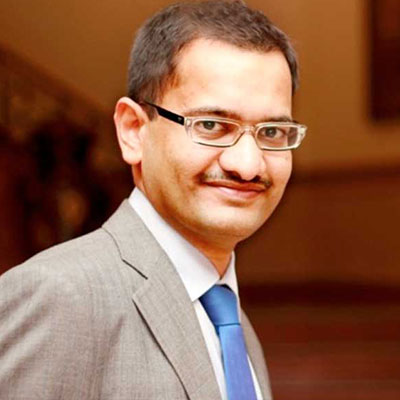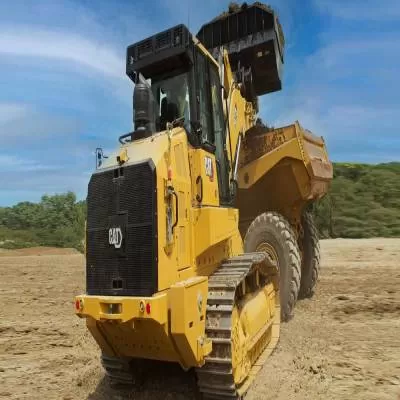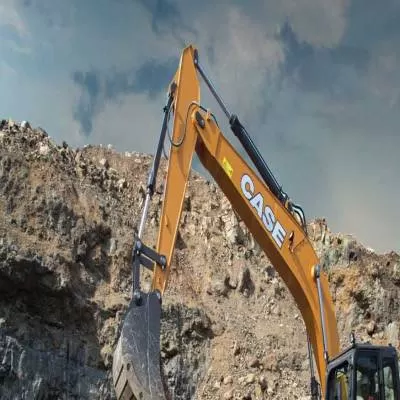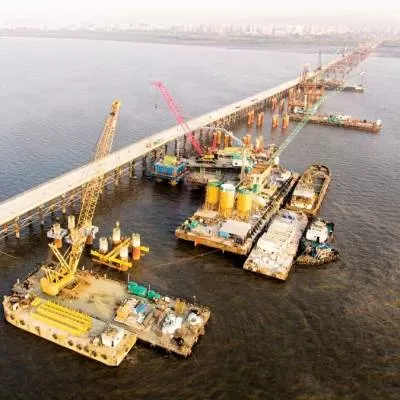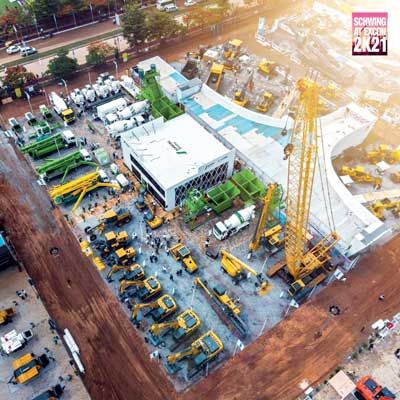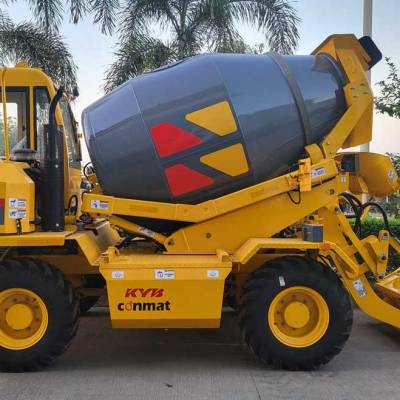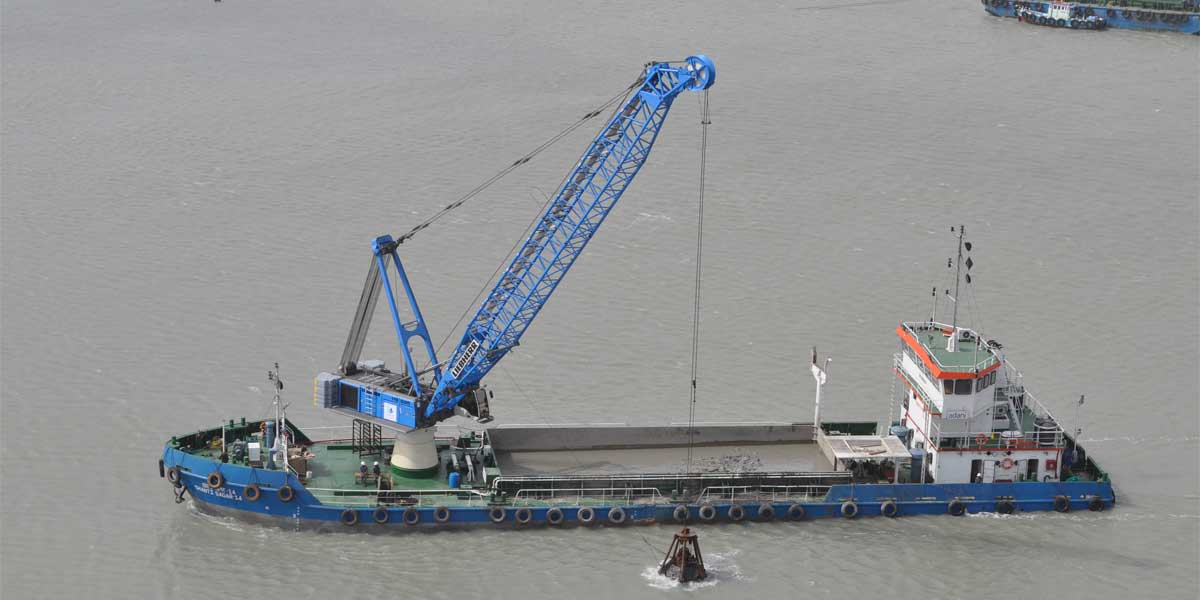
Material abundance
Read full article
CW Gold Benefits
- Weekly Industry Updates
- Industry Feature Stories
- Premium Newsletter Access
- Building Material Prices (weekly) + trends/analysis
- Best Stories from our sister publications - Indian Cement Review, Equipment India, Infrastructure Today
- Sector focused Research Reports
- Sector Wise Updates (infrastructure, cement, equipment & construction) + trend analysis
- Exclusive text & video interviews
- Digital Delivery
- Financial Data for publically listed companies + Analysis
- Preconceptual Projects in the pipeline PAN India
- Tushar Mehendale
- Electromech
- material handling industry
- ancillaries
- infrastructure
- the steel sector
- non-conventional power
- Manish Mathur
- ACE Cranes
- VG Sakthikumar
- Schwing Stetter India
- Convenor
- ICEMA
- Mechanisation Committee
- Builders Association of India
- Mumbai-Ahmedabad link project
- ACEs
- lockdown
- Anil Bhatia
- TIL
- Ghananeel Molankar
- Construction Machinery
- Liebherr India
- Smaller cranes
- Rough-terrain cranes
- Bauma
- Liebherr
- infrastructure projects
- Manish Mathur
- Tafe
- Mahindra tractors
- National Infrastructure Pipeline
- XCMG cranes
- Prashant Suryawanshi
- Manitowoc Cranes India
- Potain MCT 85
- Crane Care technical documentation
- Potain cranes
- Atmanirbhar Bharat
Photo Courtesy: Liebherr IndiaSince the last couple of months, it has been business as usual for the material handling industry. “Be it the automobile sector or ancillaries, infrastructure, the steel sector, non-conventional power, etc, people are getting into negotiations and buying equipment, says Tushar Mehendale, Managing Director, Electromech. “We see genuine demand.”And Manish Mathur, Vice-President, ACE Cranes, says business touched decent levels in June. Thereafter, “demand has gradually increased, so much so that this has been our best October in 25 years.” “With the unlock phase in the months of August and September 2020, the Indian material handling industry built on pre-COVID levels and further expansion in market demand happened since September,” says Sunil K Gupta, President, KION India. Demand drivers Mathur attributes ACEs business growth to pent-up demand, the Government’s focus on roads and metro infrastructure, and overall improvement in the infrastructure industry, visible from the high number of orders from the retail segment. “Crane-hiring businesses make up 60 per cent of our sales and our current demand from small-time crane hiring businesses is a good symbol of an uptick in the industry.”“National Highway projects and the Mumbai-Ahmedabad link project have a lot of lifting requirements and are currently a big driver of demand,” opines VG Sakthikumar, Managing Director, Schwing Stetter India, Convenor for Membership Committee, ICEMA, and Chairman of the Mechanisation Committee, Builders Association of India. In future, he feels new metro projects and refineries will drive demand.“With the focus on contact-free material handling and last-mile delivery, the material instry is moving towards greater safety,” says Gupta. “There has been a phenomenal growth in the warehousing segment, primarily driven by growth in e-commerce and the food and beverages industry. Many warehouse and storage solutions are evolving after the onset of the pandemic. With the e-commerce market growing, there will be an incremental requirement in material handling. There might a possibility of a surge in automation—automated material handling equipment such as autonomous equipment to keep workers safe and making it easier for warehouses or factories to support contactless operation.” The demand spread at present is almost pan-India. “Geographically, we are seeing demand from across India, other than Maharashtra,” says Mathur. “For some reason, local demand and industry have not picked up in that state and projects are not gaining traction yet.”TIL has seen demand for reach-stackers from both the domestic and export markets throughout the lockdown. “Major players continued to export steel during the lockdown while on the export front, we saw additional demand from customers in Africa and CIS countries who were buying from our technology partner Hyster in Holland,” says Anil Bhatia, Vice-President, Sales & Marketing, TIL.Trending products“The trend is towards increasing efficiency, enhancing productivity, maximising safety and minimising downtime,” emphasises Gupta. KION India, a multi-brand organisation, is represented by its brands, OM, Linde, Baoli and Dematic. “We are a one-stop solution for all customer segments for their material handling requirements with 100+ customer touchpoints across India.” At the company’s ‘Factory 2.0’ production facility in Pune, it produces IC forklifts ranging from 1.5 tonne to 16 tonne; E forklifts from 1.5 tonne to 3.5 tonne; stackers with mast height up to 6.5 m; battery-operated pallet trucks; and tow and reach trucks with mast height up to 11.5 m. It also offers complete automation solutions for big warehouses. “We recently launched the feature-loaded Plus series of our existing products with enhanced performance, safety and longevity, specially designed to suit Indian conditions,” adds Gupta. “The Plus Series counterbalance trucks include our popular DVX Plus, a diesel forklift with fluid coupling transmission; KAT Plus, a diesel forklift with automatic transmission; and EVX Plus, an electric forklift. Our latest launch of Plus +++ series is aimed at improving overall customer experience. These products are produced in our Pune manufacturing facility under the ‘Make in India’ initiative.” “We have seen a steady demand for smaller capacity cranes,” opines Ghananeel Molankar, Divisional Head, Construction Machinery, Liebherr India. “The Government’s announcement of new metro projects in Tier II and Tier III cities has generated large demand for smaller capacity crawler cranes. In turn, this has created a demand for tyre-mounted cranes as well. Tyre-mounted cranes and crawler cranes with capacities ranging from 40 t to 150 t have been in demand. Besides metro railway projects, these cranes are mostly deployed in small bridge projects.”In the current scenario, Molankar believes medium-term prospects for smaller capacity crawler cranes are good. Mega projects such as refineries and windmills will churn out demand for higher capacity crawler cranes in the infra sector.TIL is seeing a positive surge in demand for rough-terrain cranes. “With a good order book, our manufacturing capacity for rough-terrain cranes is booked until end-2021,” says Bhatia. “Rough-terrain cranes are being deployed for highway projects where they are used to lift girders; the coal mining segment, which started to look up in the last quarter of 2019 and has worked through the pandemic; and the defence sector, which has ready funding for several projects.”Bhatia expects this current momentum to continue in the medium and long terms.Good tidings The overall sentiment in the material handling industry is upbeat. “This demand for new equipment is likely to continue in coming months and I am hopeful to witness a new market peak in coming years,” says Gupta with optimism. “We have witnessed double-digit market growth CAGR between 2014 and 2019 and I am looking forward to the same in coming years.”“Based on the orders we have booked since August and the Government’s focus on infrastructure, we are likely to see good business between October and December and thereafter in 2021-22,” says Sakthikumar. “We can see a genuine need for equipment.” December is usually a slow month for sales but the January to March quarter traditionally makes up for it, says Mathur. He expects to see growth in the coming quarters. “The worst is over,” he says. That’s music to our ears! Portfolio expansions Last year during Bauma in Munich, Liebherr launched the LSC 8-18 slurry wall cutter mounted on the carrier machine HS 8130.1 HD, a duty-cycle crawler crane of 130 t capacity. The HS 8040.1, a duty-cycle crawler crane of 40 t capacity, was also launched at the same event. Duty-cycle crawler cranes are specially designed and manufactured for duty-cycle operations like clamshell, slurry wall grabs, dynamic soil compaction, trench cutter, carrier for piling operations and, of course, lifting as well. ITD Cementation and L&T, among other companies, have these multipurpose cranes in their fleet and use them extensively.“Under our Cranes & Beyond strategy, we are getting involved with material handling equipment beyond industrial overhead cranes,” shares Tushar Mehendale, Managing Director, Electromech. “We have added Yale forklifts from Hyster Yale Group (USA) to our portfolio and, more recently, aerial work platforms and tower crane rentals for infrastructure projects.”Industry wish-list Often, finance is singled out as a constraint to growth. In the present scenario, VG Sakthikumar, Managing Director, Schwing Stetter India, Convenor for Membership Committee, ICEMA, and Chairman of the Mechanisation Committee, Builders Association of India, believes corporate customers are facing no issues in getting funds. However, retail and rental segments are facing some challenges because finance companies and banks are cautious of risk nowadays. “We don’t see finance as being an issue anymore,” says Manish Mathur, Vice-President, ACE Cranes. “Bank loans are forthcoming in sectors where lenders have opted against any further moratorium on loans.” Mathur cites supply chain disruptions and shortages as a current constraint. “We use engines from Simpson and Mahindra and these are also used in Tafe and Mahindra tractors, respectively. With the tractor business booming, we are seeing a shortage of engines and, likewise, hydraulic cylinders.” He expects this shortage to persist for at least six to eight weeks as supplier companies are facing manpower and supply chain issues of their own. Overall, “the Government has done a very good job on infra projects, which is critical to get the economy back on track,” acknowledges Anil Bhatia, Vice-President, Sales & Marketing, TIL. “Beyond that, incentives to the real-estate sector are in order; these would help boost employment. Also the National Infrastructure Pipeline (NIP) and focus on local manufacturing are great initiatives for the sector.” “The ‘Atmanirbhar Bharat’ initiative coupled with a curb on China is a positive direction that will benefit TIL significantly,” he adds. “Of course, it will necessitate some bold decisions on supply chain issues.” Speaking of a curb on Chinese products, how is demand for cranes originating in that country? “People talk about the country of origin but customers see the project in totality,” responds Sakthikumar. The key to the success of XCMG cranes in India, according to him, is the effort put in to deliver value to customers. “We try to give customers an edge by giving them an additional feature or extra capacity, say, by offering a 110 t configuration where they were used to buying a 100 t truck crane,” he shares. “We have never taken a product off the shelf from our principals without checking the engineering suitability of the product for the Indian market,” Sakthikumar continues. “We choose cranes for India after conducting country-specific market research that looks at the kind of projects coming up here and determining what compactness, lifting mechanism and capacity and reach would best be suited for those, coupled with cost-competitiveness. And while our current volumes do not justify Make in India, I expect this to happen in future.” World-class trainingManitowoc Crane Care, one of the world’s leading providers of crane training, commissioned a new training centre at the Potain manufacturing facility in Pune in October 2020. “Through facilities for hands-on crane training, simulators and dedicated classrooms, the training centre provides knowledge on the latest lifting technology to help customers and their technicians solve issues faster,” shares Prashant Suryawanshi, Managing Director, Manitowoc Cranes India. “We offer simulators for cranes such as the Potain MCT 85 and mechanisms such as the 60 LVF winch to ensure trainees can provide higher uptime on jobsites through proper operation and maintenance of cranes on projects.” Training helps familiarise technicians with Crane Care technical documentation so that they can readily find answers to everyday questions, he adds. “India has over 2,000 Potain cranes in operation so this is the right time to enhance our training activities here.”


